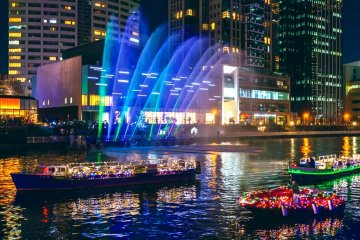As Expo 2025 Osaka draws closer, Takenaka Corporation’s groundbreaking “Mori ni naru kenchiku” project (literally "architecture that becomes a forest") is coming to life, showcasing the event's focus on sustainability. Built with cutting-edge 3D printing technology and biodegradable materials, these temporary structures are designed to provide visitors with a unique space to rest and relax while highlighting the future of eco-friendly architecture.

Recently recognized by Guinness World Records™ as the world's largest 3D-printed biodegradable buildings, Mori ni naru kenchiku combines the best of modern innovation with traditional Japanese craftsmanship. The structures are made from biodegradable resin and will be clad in handmade Japanese washi paper, including “Seed Paper” crafted by children from recycled milk cartons and newspapers embedded with plant seeds.
This forward-thinking design ensures the buildings not only fulfill their purpose during the Expo (and have fun changes in appearance as the seeds sprout!) but also give back to the environment when their use is complete.

The idea for this project came from an internal competition held at Takenaka Corporation from 2020 to 2021, which challenged employees to envision architecture that evolves into nature rather than waste. After extensive testing and development, construction kicked off in August 2024. You can take a look at more of the building process via the video below.
When Mori ni naru kenchiku is officially opened in April 2025, visitors to the Osaka Expo will get to experience this fusion of technology, nature, and traditional artistry firsthand. It's one example of a project that perfectly aligns with the Expo’s theme: “Designing Future Society for Our Lives.”









